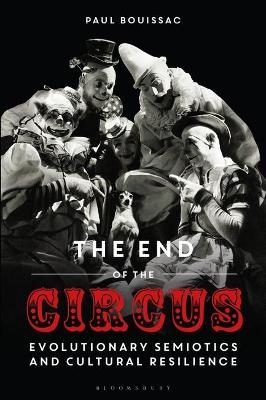
The End of the Circus
Bloomsbury Academic (Verlag)
978-1-350-16649-3 (ISBN)
The End of the Circus draws on Bouissac’s extensive ethnographic research, including previously unpublished material on the training of wild animals and clown make-up, to chart the origins of the circus in Gypsy culture and the drastic change in contemporary Western attitudes on ethical grounds. It scrutinizes the emergence of the new form of circus, with its focus on acrobatics and the meaning of the body, showing how acrobatic techniques have been appropriated from traditional Gypsy heritage and brought into the fold of mainstream popular entertainment. Questioning the survival of the new circus and the likely resurgence of its traditional forms, this book showcases Bouissac’s innovative approach to semiotics and marks the culmination of his ground-breaking work on the circus.
Paul Bouissac is Professor Emeritus at Victoria College, University of Toronto, Canada. He is a world renowned figure in semiotics and a pioneer of circus studies.
Acknowledgements
1. Overture: Themes and Variations
Introduction
Whence and wither the ‘traditional’ circus?
‘Death to the circus’
Clowns on the wane
The body: from ritual to spectacle
The human tragedy: “You! Wretched Gypsies!”
2. First Movement, Andante Sostenuto: The Time of the Gypsies
Who are the Gypsies?
Where do Gypsies come from?
Contrapuntal development #1
Being a Gypsy: the bane or bliss of difference
A deeper time perspective
The circus enters history: Was Philip Astley a Gypsy?
The art of survival
Contrapuntal development #2: What is a name?
Our inner Gypsy
An ode to resilience
On the flipside
The evolution of space, time, and cultures
3. Second Movement Vivace Furioso: Animals
A memory
Hunger rules the world
The human animal: the game of life and death
Bear power
The hyena men of Nigeria
Wolves
The death of a tigress
Hunger never stops
From non-animal humans to non-human animals
The cage acts of yesteryears
What is a wild animal?
The antiquity of the animal circus: the elephants
The antiquity of the animal circus: the predators
Wild utopia
Ethos, ethics, and the Peterson effect
A self-defeating strategy
Cultural entropy and semiotic panic
4. Third Movement, Adagio Lamentendo: Clowns
Perplexed clowns
Masks
What is a clown?
A detour to India: the Vidûshaka
A modern master: Charlie Chaplin
Two kinds of laughter
The twilight of the clown: off-limit humor
The clown and its discontents
The white-face clown: the waxing and waning of a cultural hero
Black face matters
The crucifixion of the clown
Free speech and the clowns: Is Jordan Peterson a trickster?
5. Fourth Movement, Maestoso Appassionato: Bodies
What is a body?
Modes of survival
Life on the brink of death
Epiphanies
The body brought into play
Greatness and misery of acrobats’ bodies
Negotiating one’s own body: benefit-to-cost ratio
Bodies unbound
The visceral circus: bodies of fear and desire
Technological evolution and the perception of risk
For your eyes only: Eros at the circus
From ritual to spectacle
6. Coda, Sforzando
Resistance and resilience
The downfall of the traditional circus
The Anthropocene delusion
The reign of anthropomorphism
The return of the hyenas
References
Index
| Erscheinungsdatum | 13.09.2021 |
|---|---|
| Zusatzinfo | 30 bw illus |
| Verlagsort | London |
| Sprache | englisch |
| Maße | 156 x 234 mm |
| Gewicht | 544 g |
| Themenwelt | Kunst / Musik / Theater ► Theater / Ballett |
| Geisteswissenschaften ► Philosophie ► Erkenntnistheorie / Wissenschaftstheorie | |
| Geisteswissenschaften ► Sprach- / Literaturwissenschaft ► Sprachwissenschaft | |
| Sozialwissenschaften ► Ethnologie | |
| Sozialwissenschaften ► Soziologie | |
| ISBN-10 | 1-350-16649-9 / 1350166499 |
| ISBN-13 | 978-1-350-16649-3 / 9781350166493 |
| Zustand | Neuware |
| Haben Sie eine Frage zum Produkt? |
aus dem Bereich


![Was heißt Denken?. Vorlesung Wintersemester 1951/52. [Was bedeutet das alles?] - Martin Heidegger](/media/113619842)